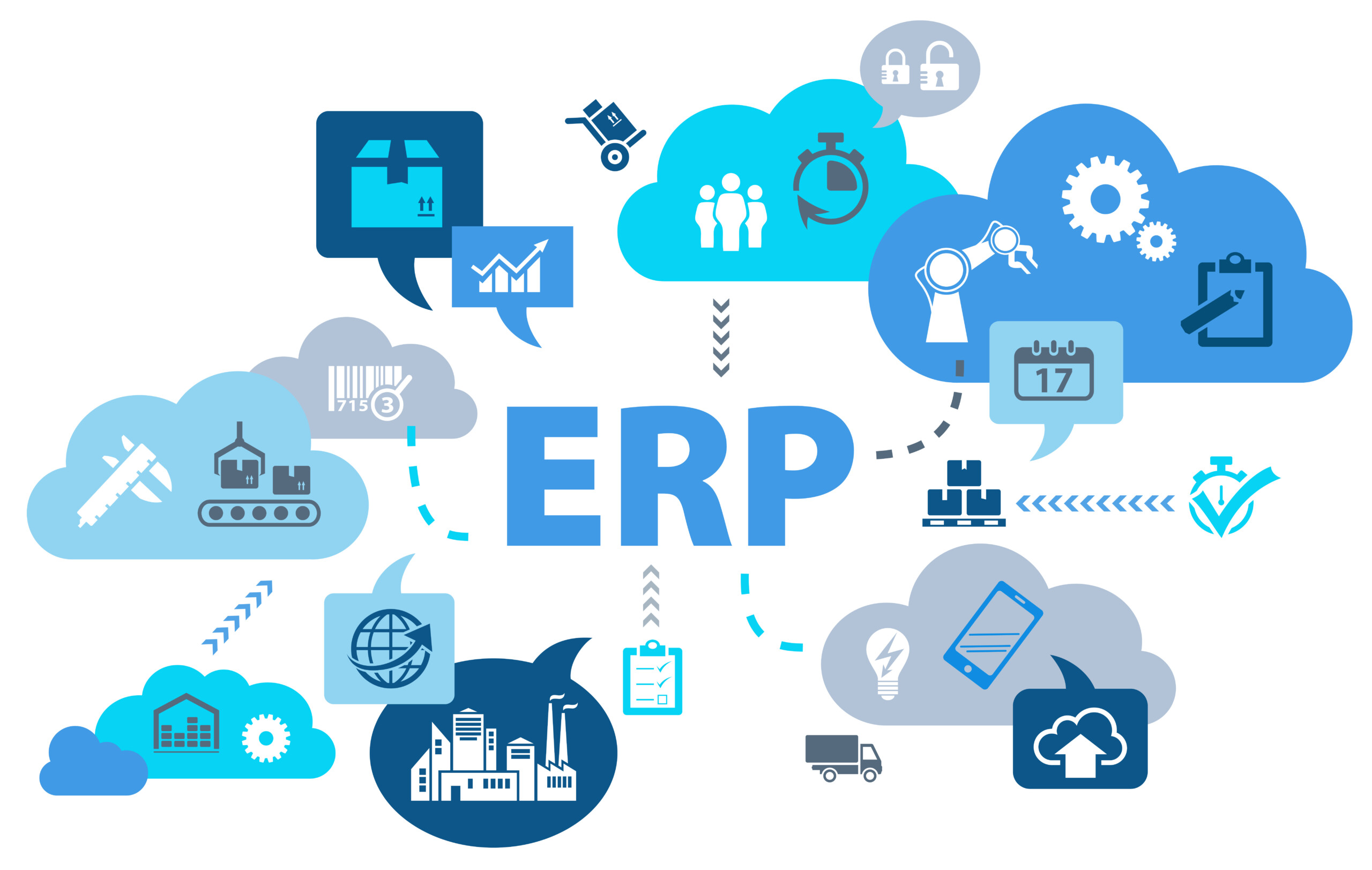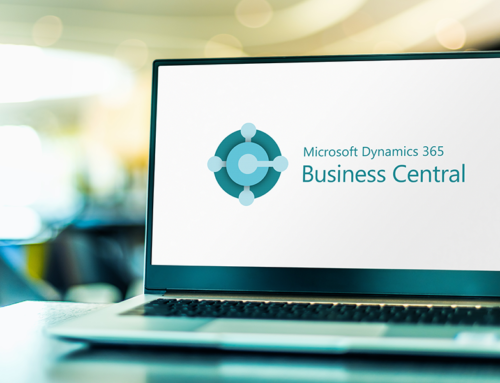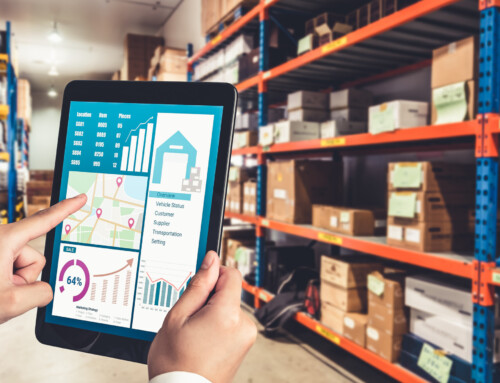
So, you’ve decided that your current business systems are holding back your business and do not meet your growth plan requirements? You’re considering an ERP system, but you aren’t quite sure what the right ERP model for your business is…
This is a real problem.

Your current business software won’t scale because it’s not integrated and requires too much manual data entry between your order handling system and your finance package.
What is the answer to such a problem? A new ERP (Enterprise Resource Planning) system. Once you’ve researched whether ERP is right for you, it is time to choose the right ERP model for your business. Choosing the right ERP for your business isn’t just about functionality, it’s also about the delivery model.
Our Managing Director, Martin Roberts, has worked with many different types of ERP systems within businesses that sit across a range of different industries. As he says, it is important for companies to get the right ERP model to ensure you select a system that is right for them and their business.

“Nowadays, all ERP systems do similar things – the days when they were differentiated by their functionality is gone. They all handle sales and purchase orders, stock levels and finance in roughly the same way. What is important these days is how you buy and access your ERP system, as well as the implementation model.
“Also critical is the ERP vendor – you ultimately have a choice between different go-to-market models, which are typically split into Tier 1, 2 and 3:
Tier 1
Traditionally sold as enterprise-ready ‘big’ ERP that is suitable for large multi-site corporations and is usually highlighted as the most expensive option.
Tier 2
Touted by some as the ‘sweet spot’. ERP systems here tend to be not too large or expensive – meaning they have many features of Tier 1 systems without the complexity.
Tier 3
Often considered to be made up of ‘niche’ vendors that specialise in certain industries, or are just smaller, but perhaps, ambitious ERP software houses.
“It is quite simple why some vendors are more expensive, as the more complex the software, the more complex the support. However, it will also likely be the case that larger vendors may invest a great deal more in development resources than smaller ones. This means that larger vendors have more functionality and regular updates, including security vulnerability patching.”
Another area of consideration for businesses is delivery models. There are typically two main types that dominate the ERP landscape, here’s Martin on vendor delivery and partner delivery:
On Vendor Delivery:
“Not only does the company write the software, but they also implement and support throughout and post-implementation. What are the benefits of this? Well, you are likely to be a bigger fish in a smaller pond, as well as influencing the development of the software in the future, and you’ll most likely be looked after very well. If the software is more niche, it will certainly be tailored to your industry and may require less customisation than Tier 1 and Tier 2 (which can be expensive).
“The downside? Well, given that they may deliver the implementation and support all by themselves, the relationship between the two parties must be strong. If you fall out with them, your choices are limited to living with or changing the system, which could result in a brand new ERP implementation.”
On Partner Delivery:
“With Tier 1 and 2 the model is, except for larger implementations, to deliver through a partner model. The advantage of this is that you have choice. If
the partner you are working with does not have the specific industry knowledge you need, or you simply do not get on with the other party, then you can find
someone else and not have to ditch the current ERP project.
“On the other hand, it is more likely going to be a more expensive option and you will have very little, if any influence on the vendor. This doesn’t necessarily matter as the software should be expansive enough to meet your needs – and if you do require something unique or bespoke, you’ll likely be able to find a partner that can develop a custom solution that will work within your ERP system.”
Cloud software and computing have experienced a great boom over the last few years. The flexibility provided by the Cloud, gives users more options in utilising and making the most of this specific type of software. Of course, this applies to ERP too. But how can on-premise or Cloud ERP systems help a business? Martin explains:
“Traditionally, businesses had to invest in lots of hardware and an environment to keep their systems within. This is an example of an ‘on premise’ system. The software would sit in this hardware, while being patched and maintained by your own people. When software upgrades come along, you have to consider the customisations your system may have had. Sometimes these customisations might prevent you from moving to a better version. There are some businesses that are still running software from 20 years ago because they are stuck in a customisation cul-de-sac.

“Nowadays the preferred provision model is to deliver ‘in the cloud’ systems. What this means is that someone else provides the servers and the environment they live in – you are simply renting it from them.
“The implications of this are varied. In the ‘traditional’ model you’d buy your hardware and licences up front, through capital expenditure. You’d then be charged an annual maintenance fee, usually in the region of 20% of the licence cost, which would give you support and access to future releases. The benefit is that you would fix your costs for the next three to five years. “Some downsides were that if you wanted to downscale you’d still own kit and licences for the original implementation size. If you decided to upscale, you’d have to make another investment. It is worth noting that in this model the ability to look after your computer environment is critical. Interestingly, for single site organisations, connectivity was not a major concern – if you couldn’t connect to the internet, you could probably still run your business – you still had access internally to your systems.
“With the Cloud ERP model, licencing typically means that you pay a single monthly fee per user. This allows the model to be scalable – you can increase the number of users and decrease the number of users, and the pricing will alter accordingly. For businesses that are ambitious, the ability to add users as they grow is excellent, while for those that work in volatile economic environments, as many are doing nowadays, the opportunity to scale down could prove to be useful.
“Connectivity is key to the success of the Cloud. If you don’t have excellent connectivity then you may suffer outages as you could fail to connect to your ERP
system. Being connected isn’t enough, the quality of the connection is important too. In this model, it is worth investing in diverse routing – putting infrastructure in place that allows you to switch to other lines of communication in the event of an outage on your main lines. This can be achieved through a combination of leased line, ADSL or 4G/5G and satellite connectivity. It does pay to invest in this, as it can help keep you operational during times of internet outage. Not being able to connect to your ERP because someone has dug up the line or there has been a fire in a cable tunnel somewhere could lead to substantial downtime.

“One last consideration to bear in mind with the Cloud, is that, unlike with on-premise models where prices are more fixed, the cloud vendor may decide to increase their subscription price at relatively short notice. While you cannot control these changes, it is possible to budget for it.”
So, which to choose? Martin sees the future as being with Microsoft, and in the Cloud…
“The industry is increasingly moving to the Cloud ERP model. Some cynics may argue that this is because they prefer the monthly revenue model rather than the one-time payment every three-to-five-year cycle. However, it does seem to be a model that suits businesses too – otherwise they wouldn’t be investing in it as much as they are.
“For Neuways, a long term implementor, user and supporter of ERP, this is the model we choose too. We believe that it is simpler in terms of setting up, maintenance and scalability. We have also made another choice, in selecting Microsoft Dynamics 365 Business Central as the product we’d like to implement for our customers. We know that it has the support and investment from one of the largest software vendors in the world in Microsoft, and that, through our vast experience of using it, it will meet the demands of most businesses.”





